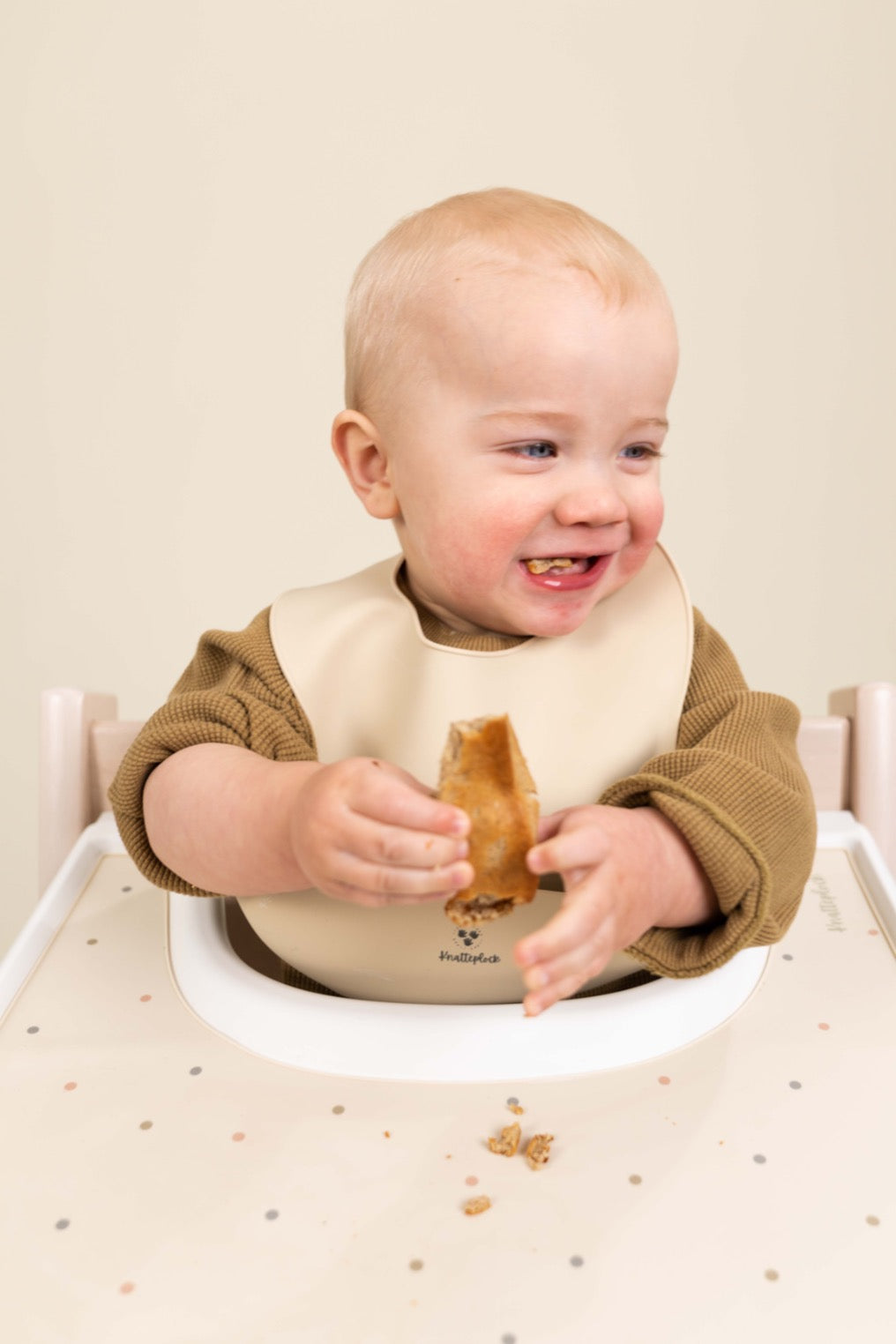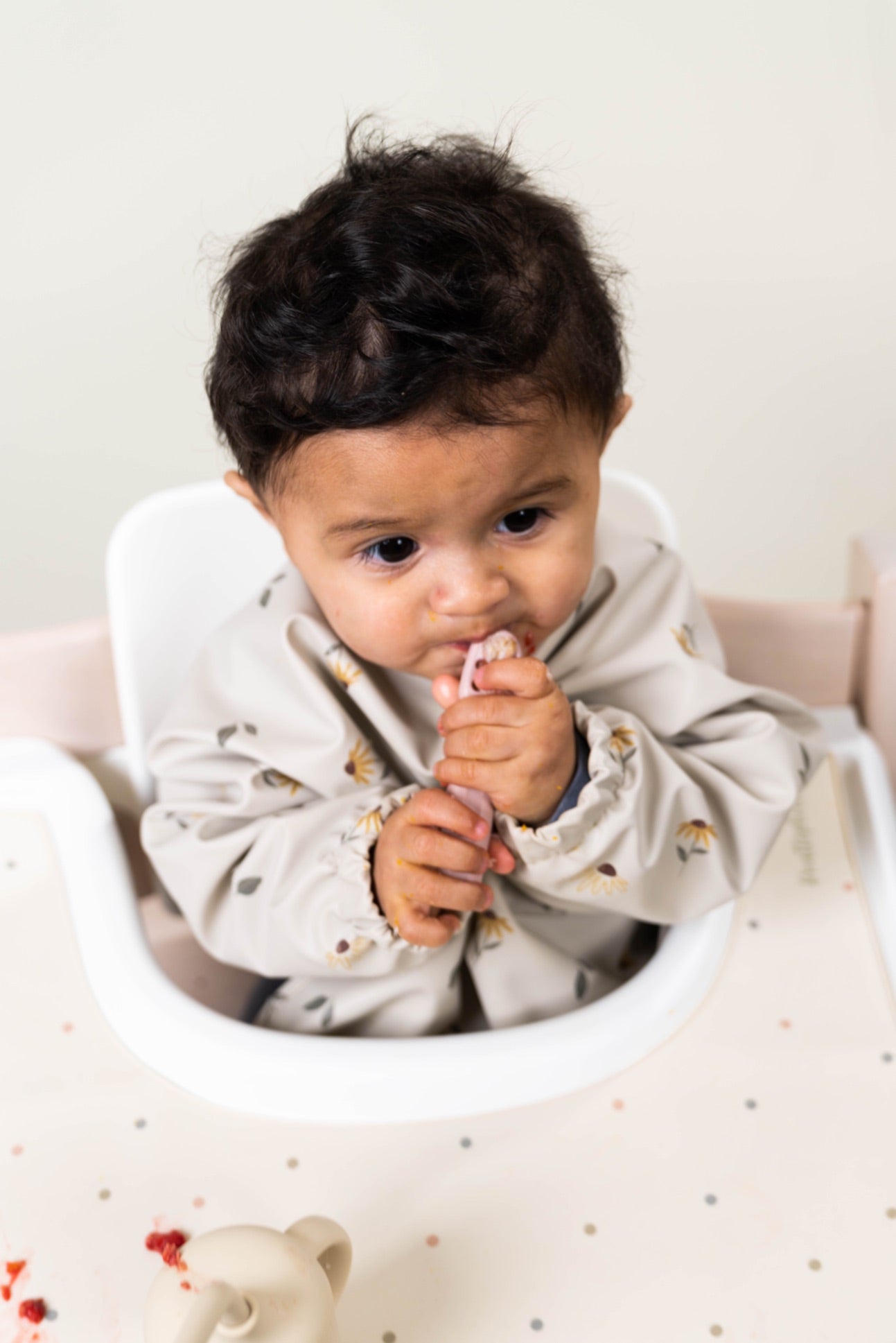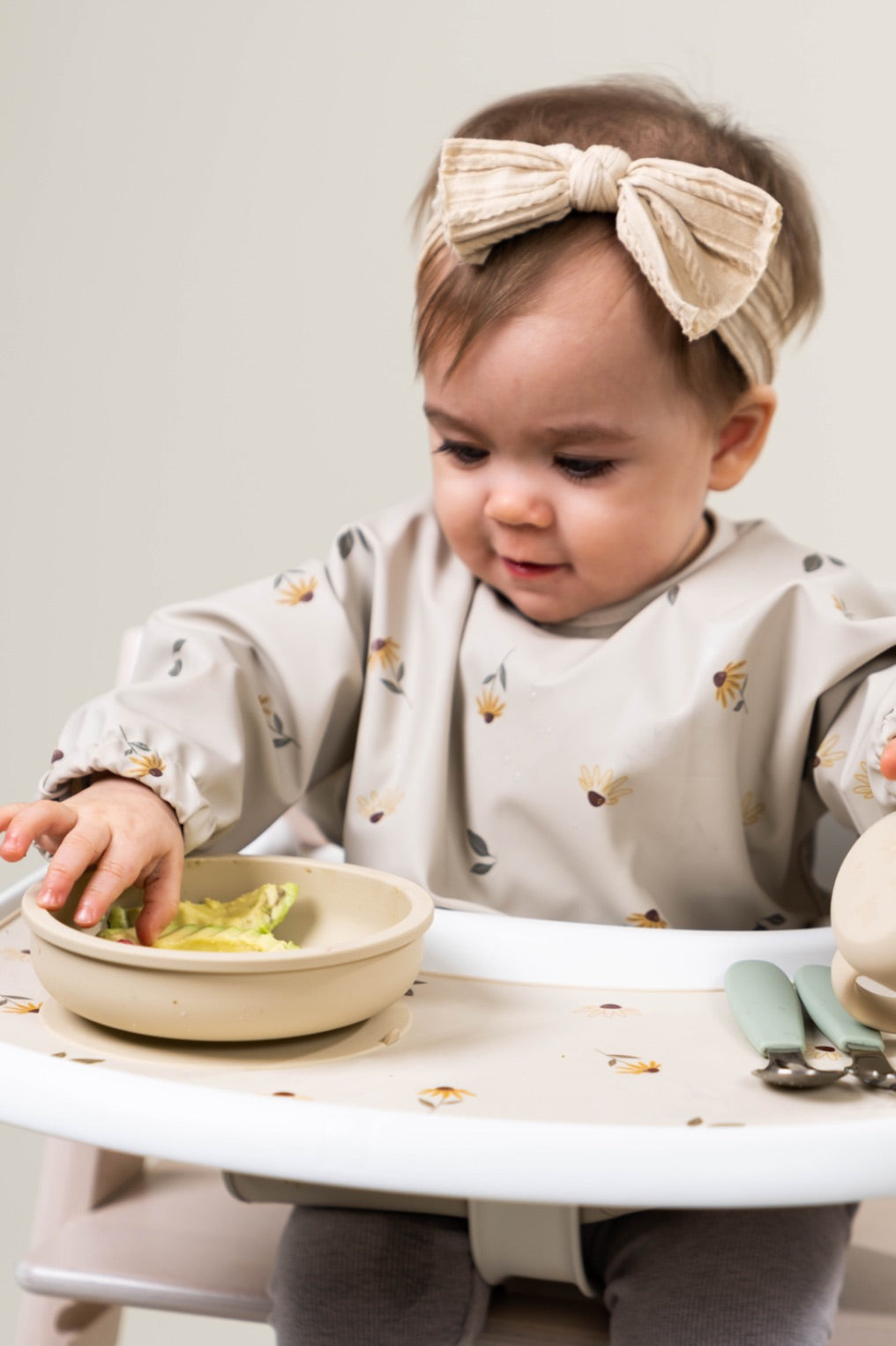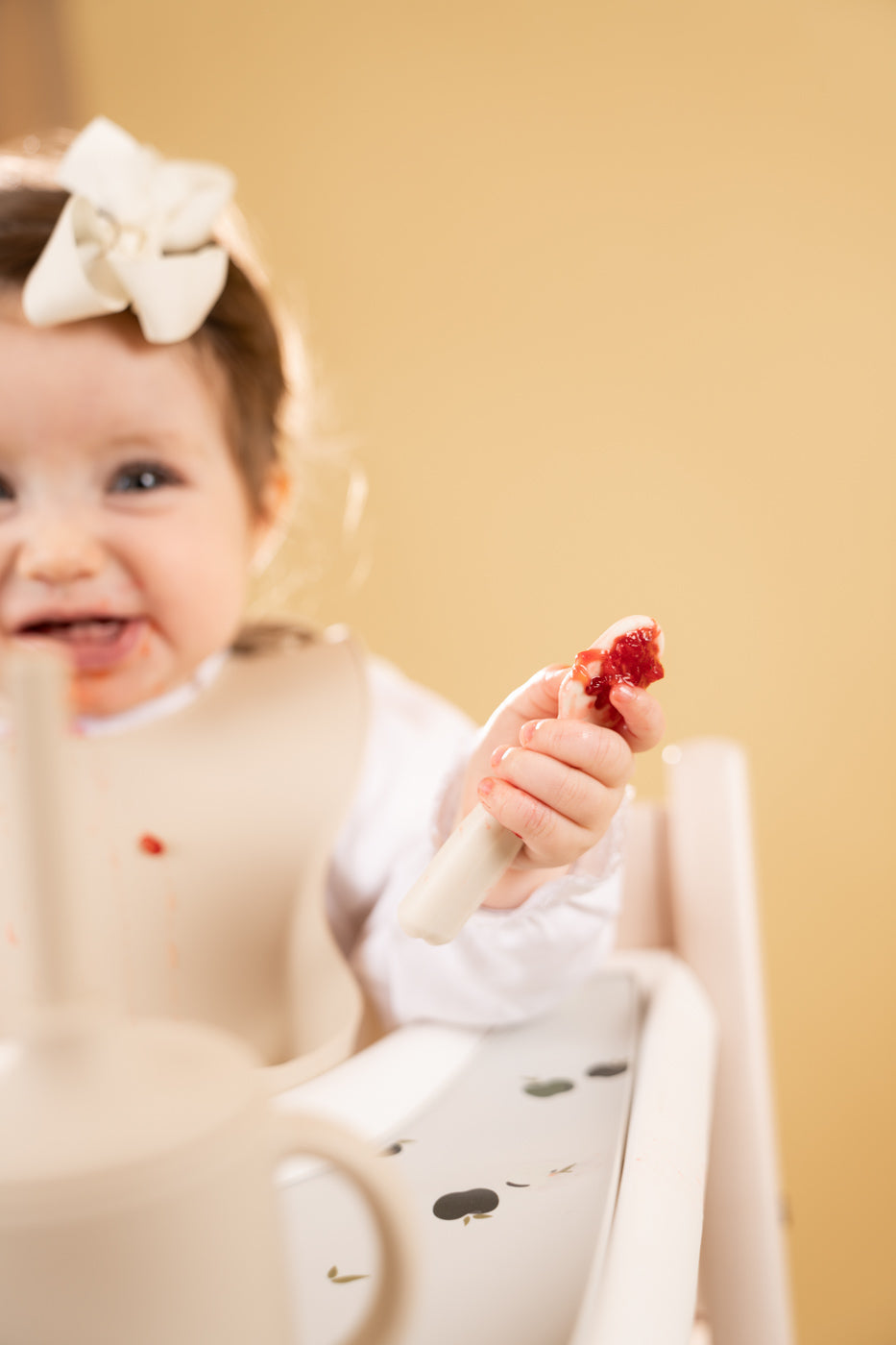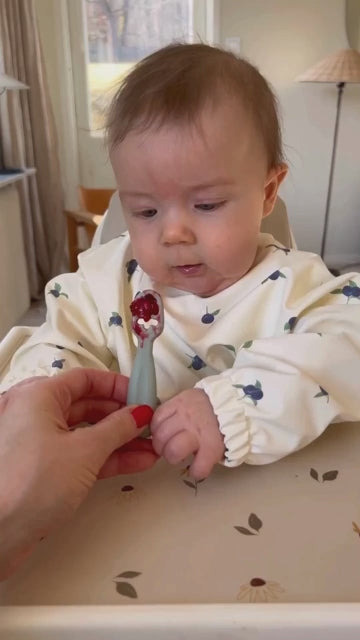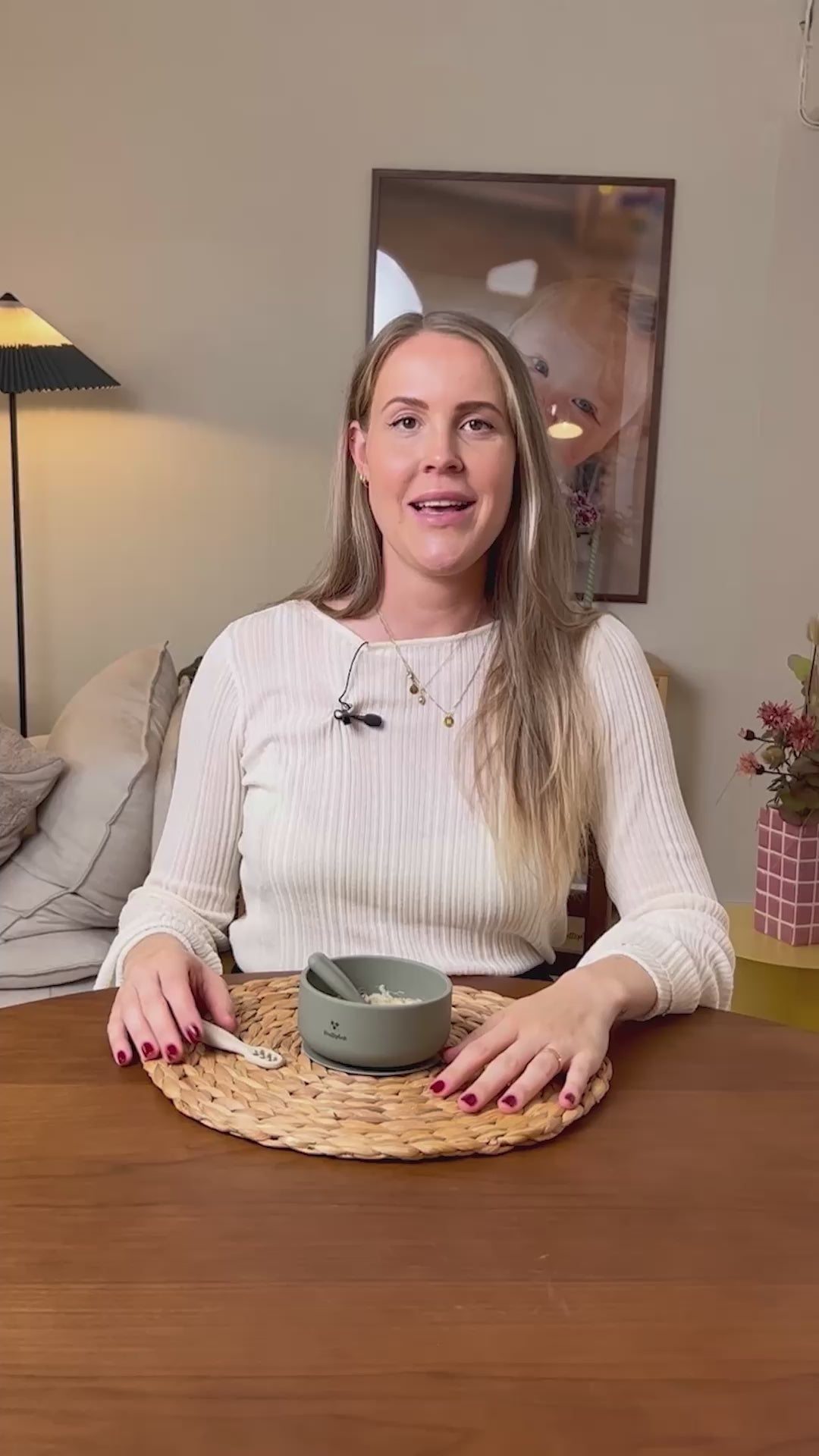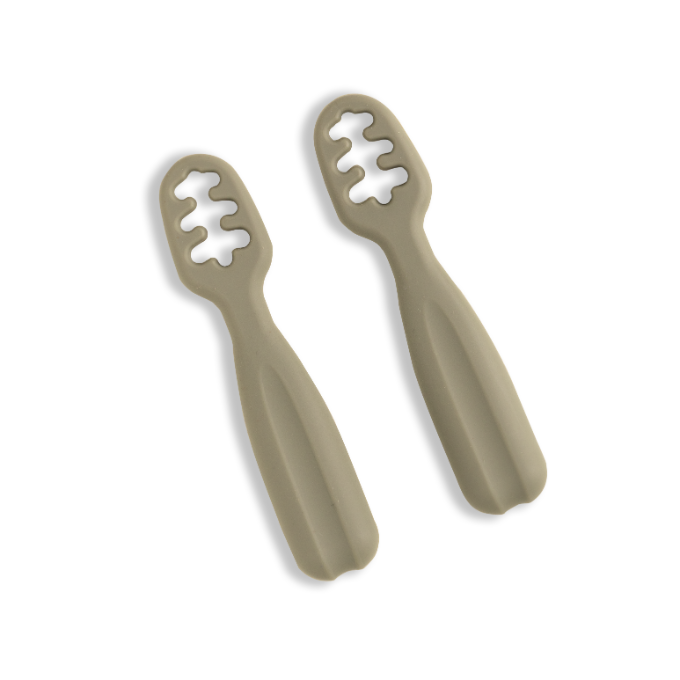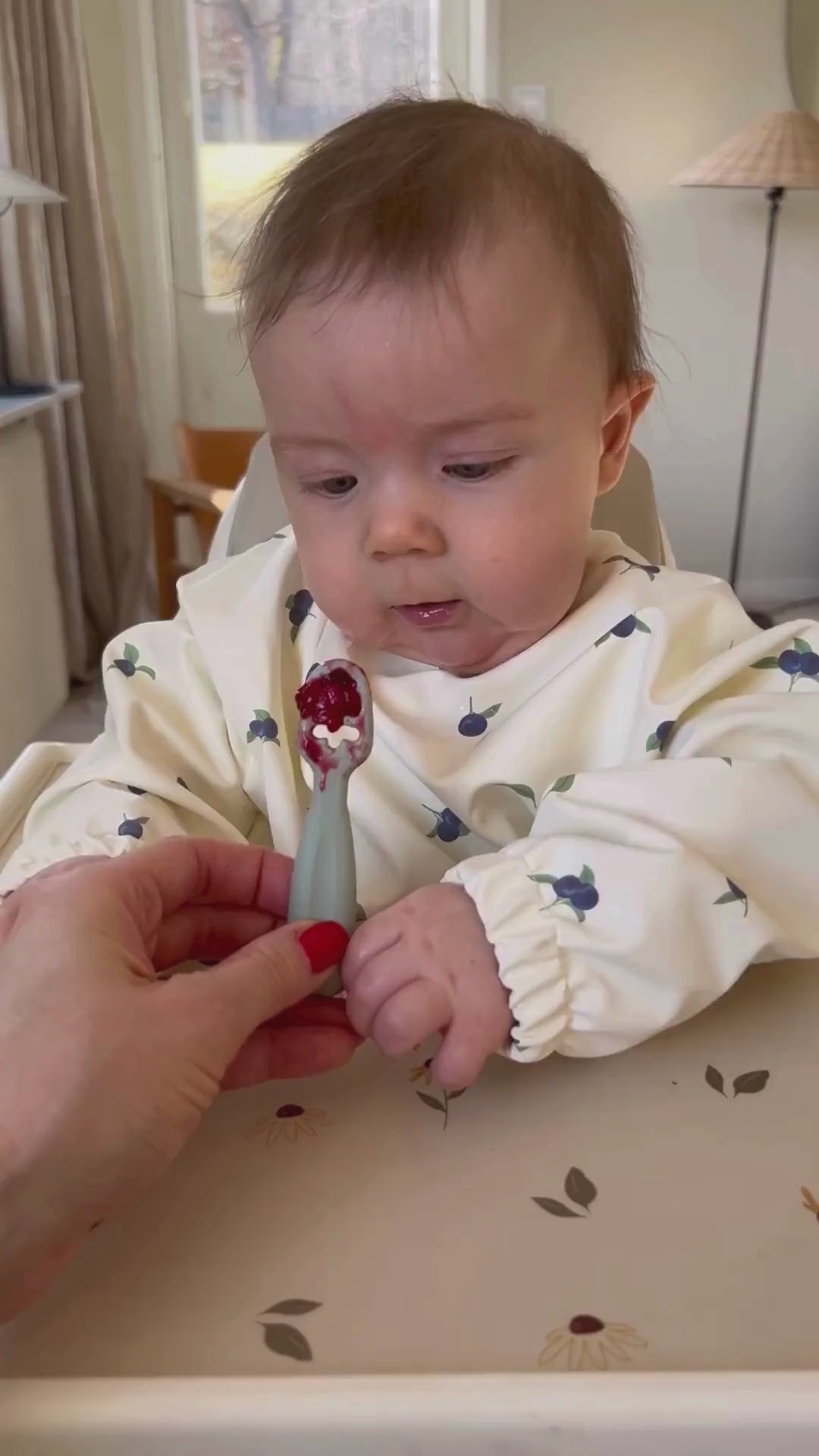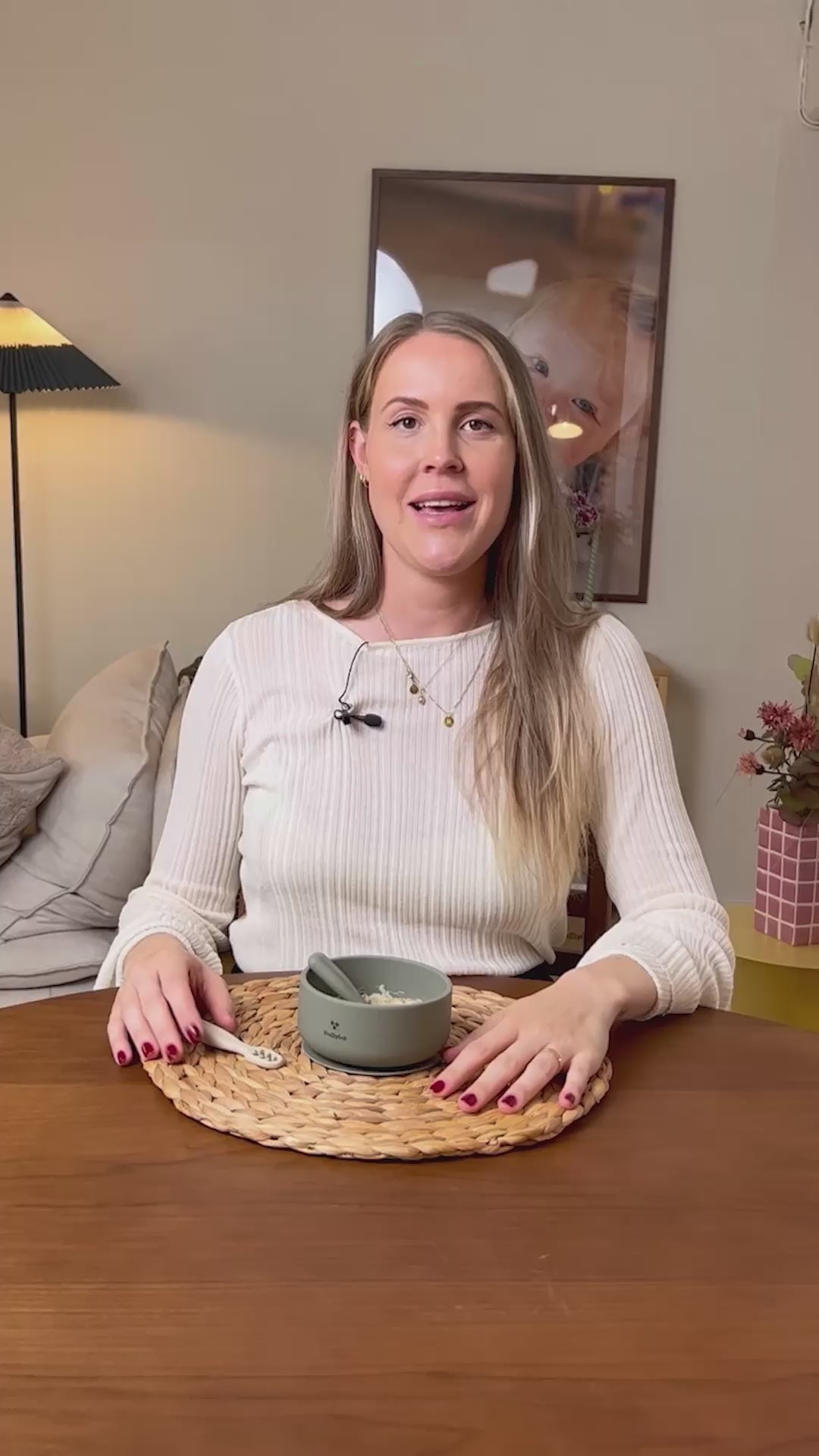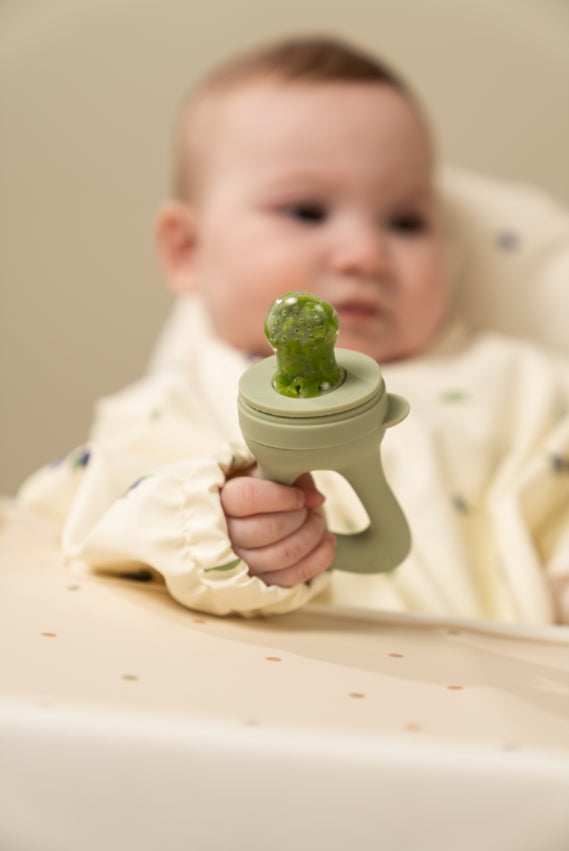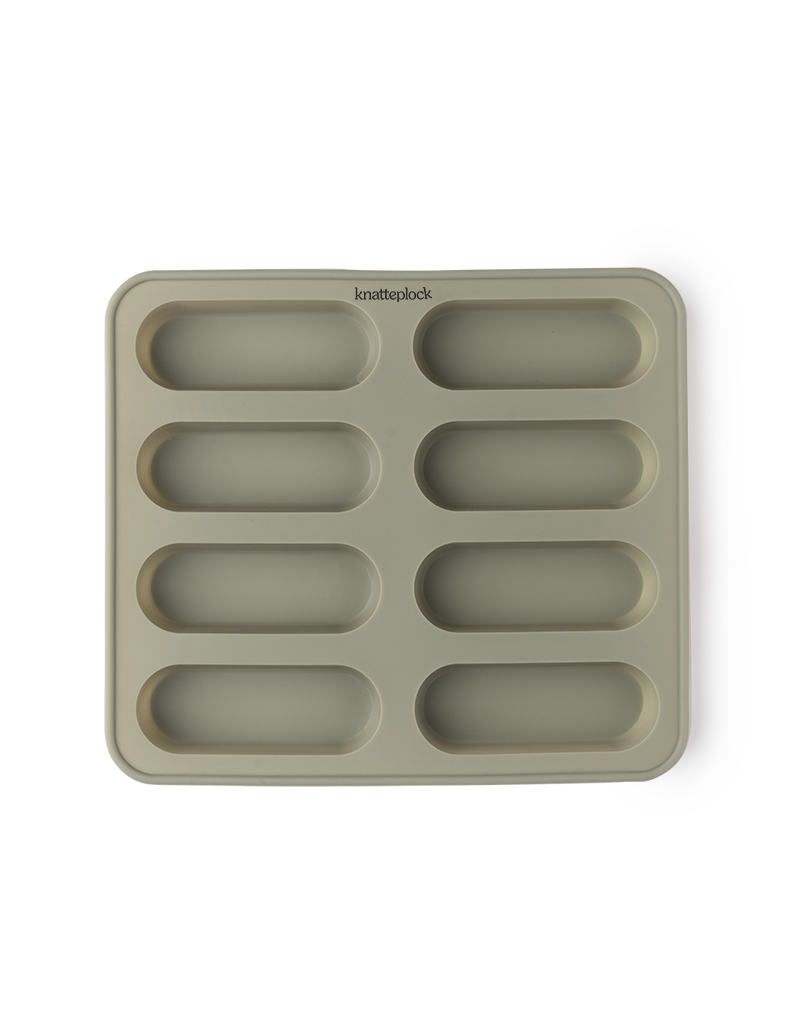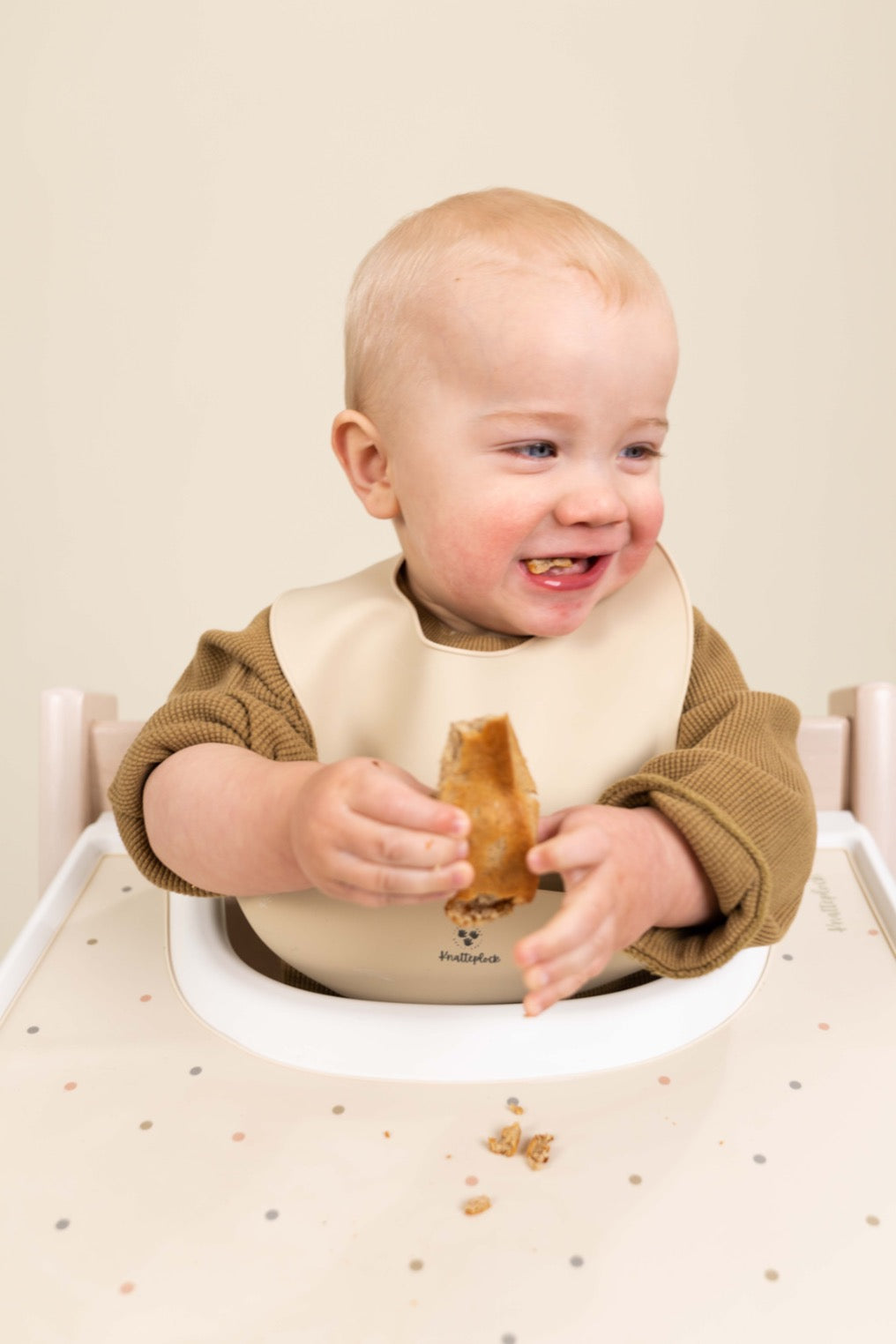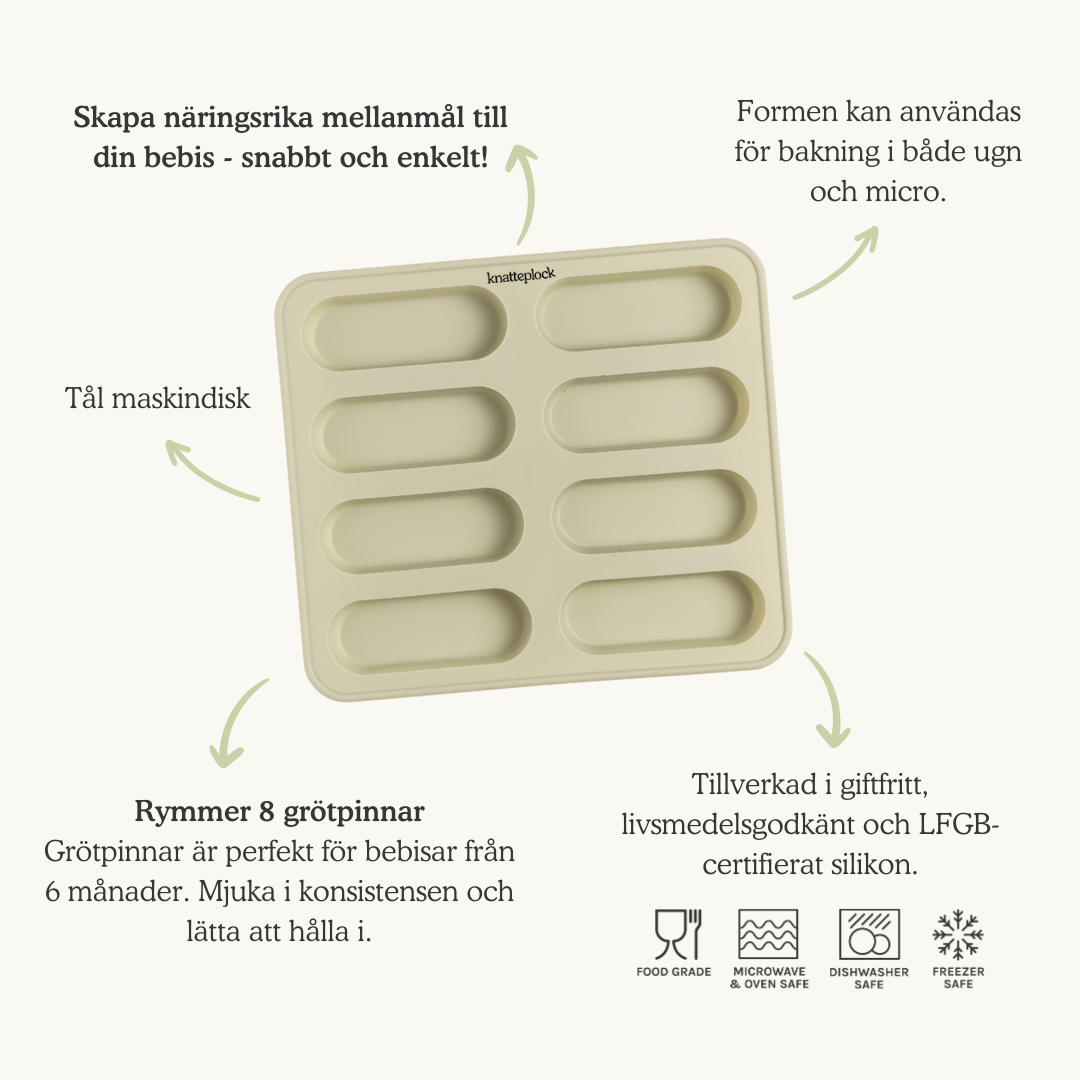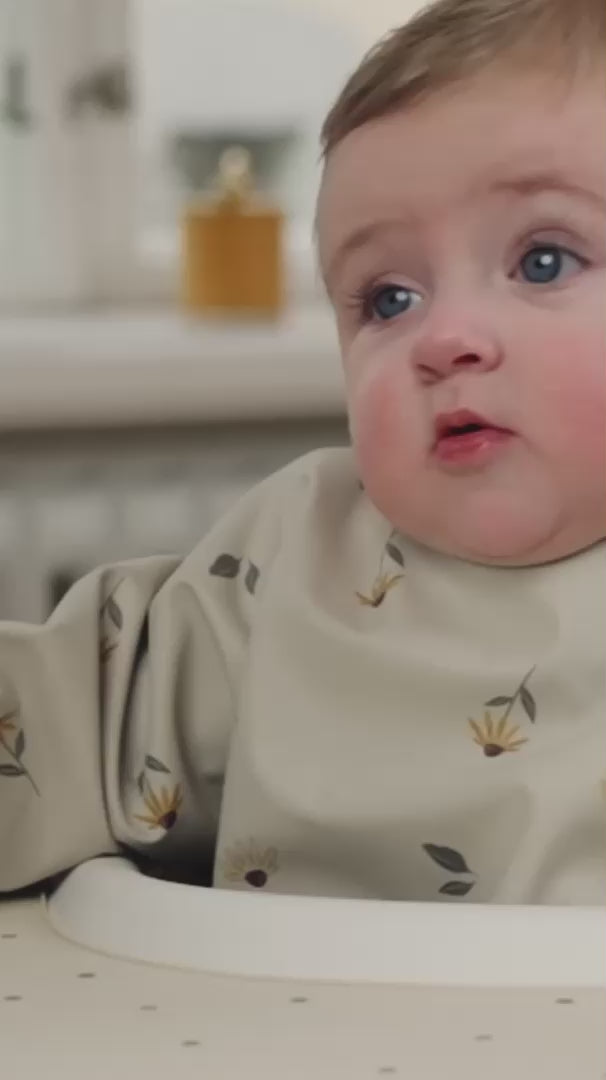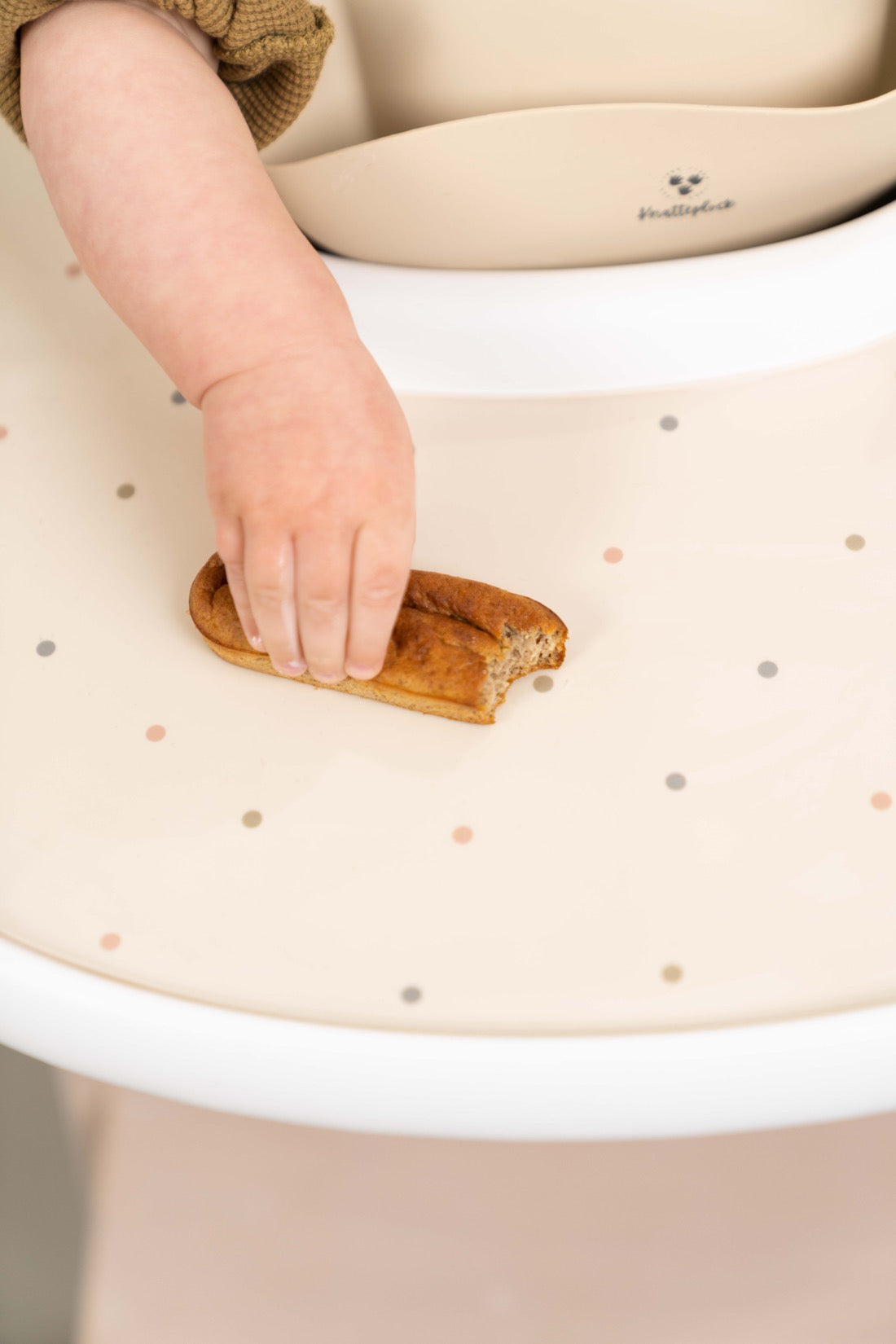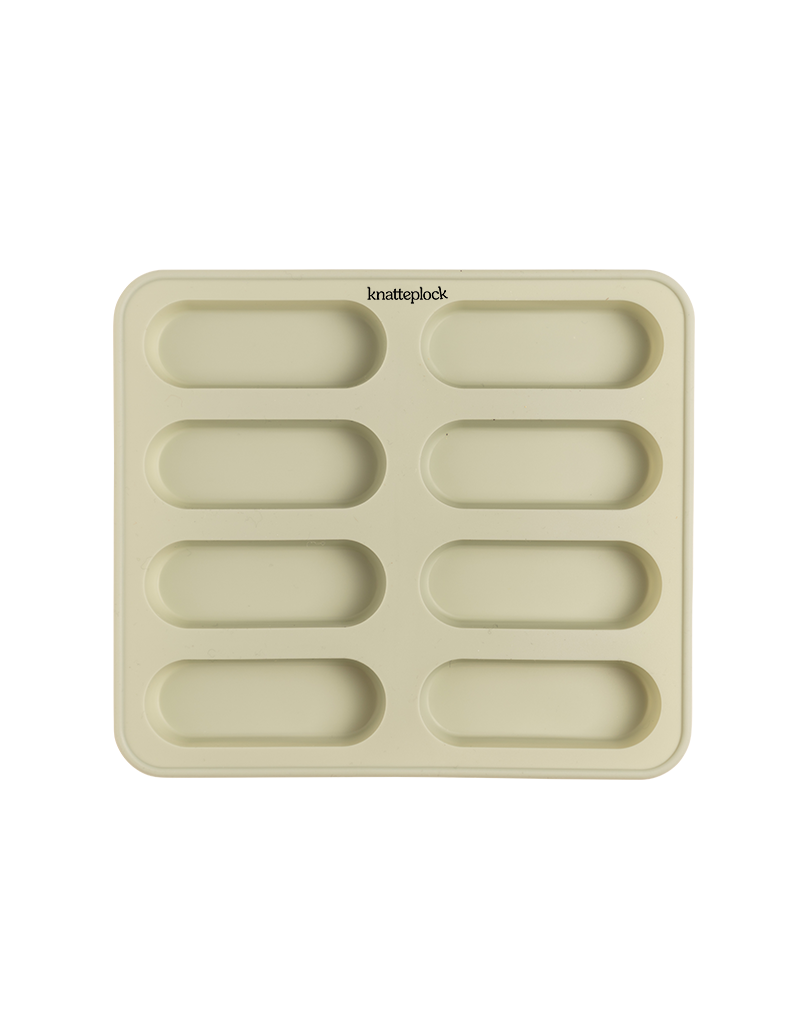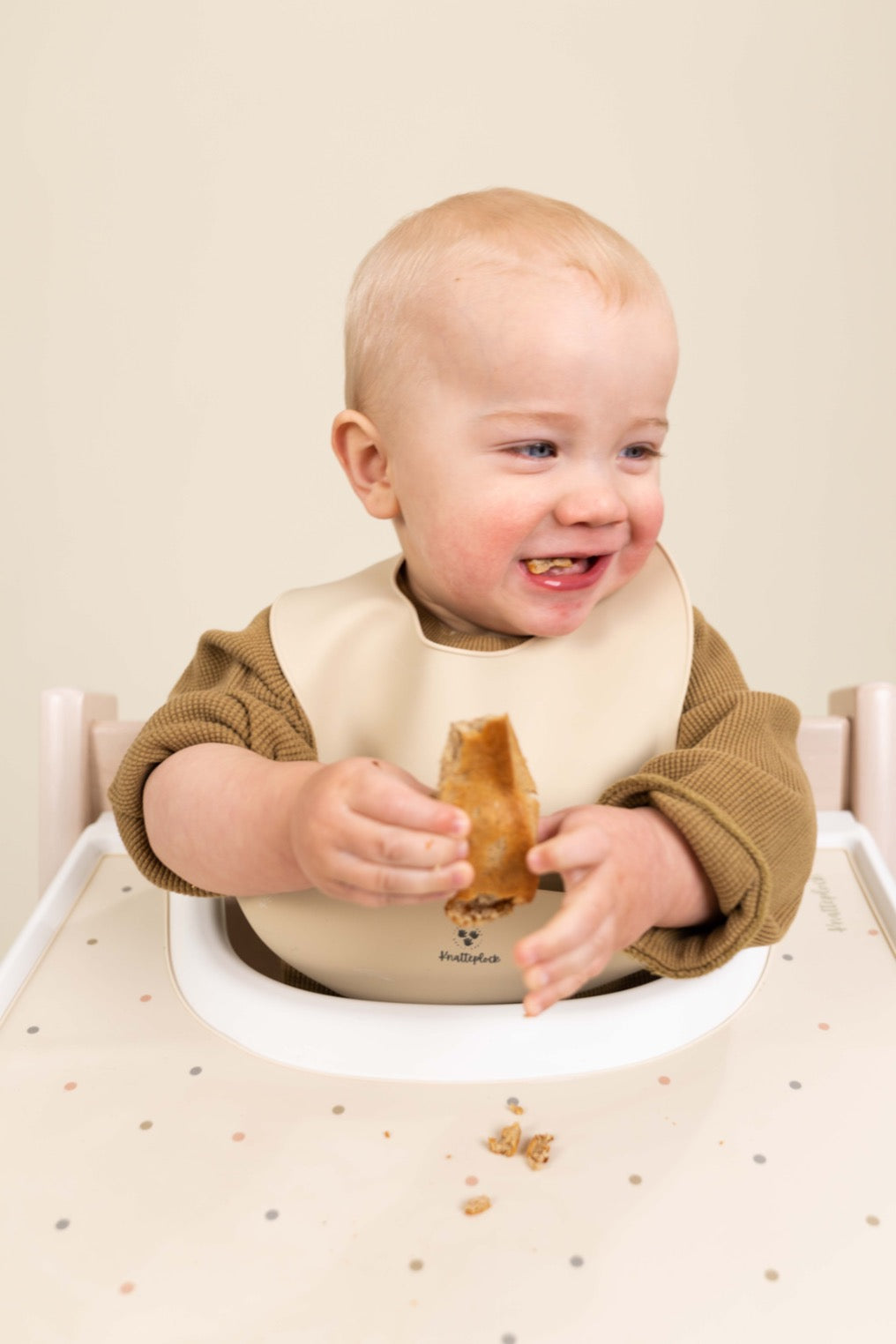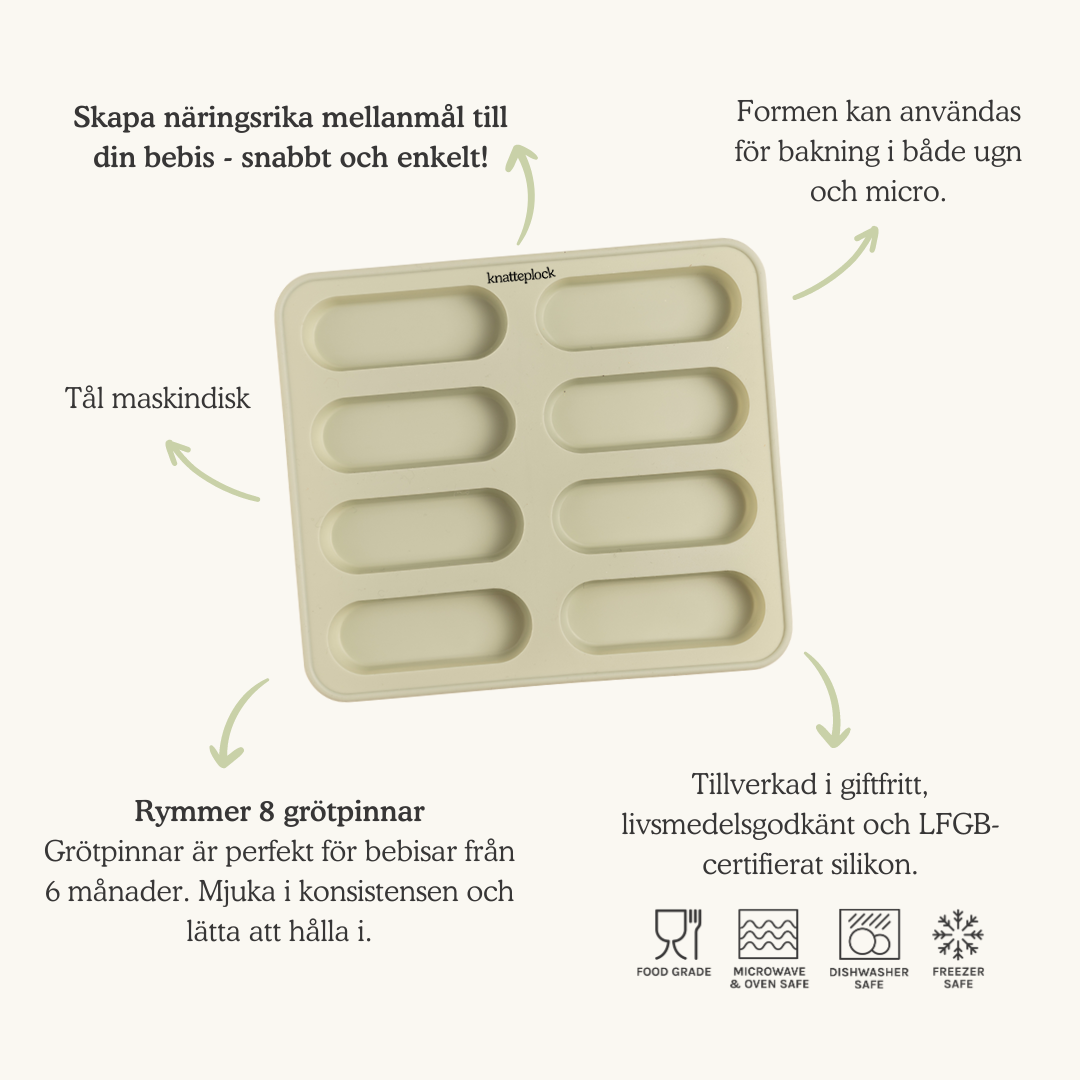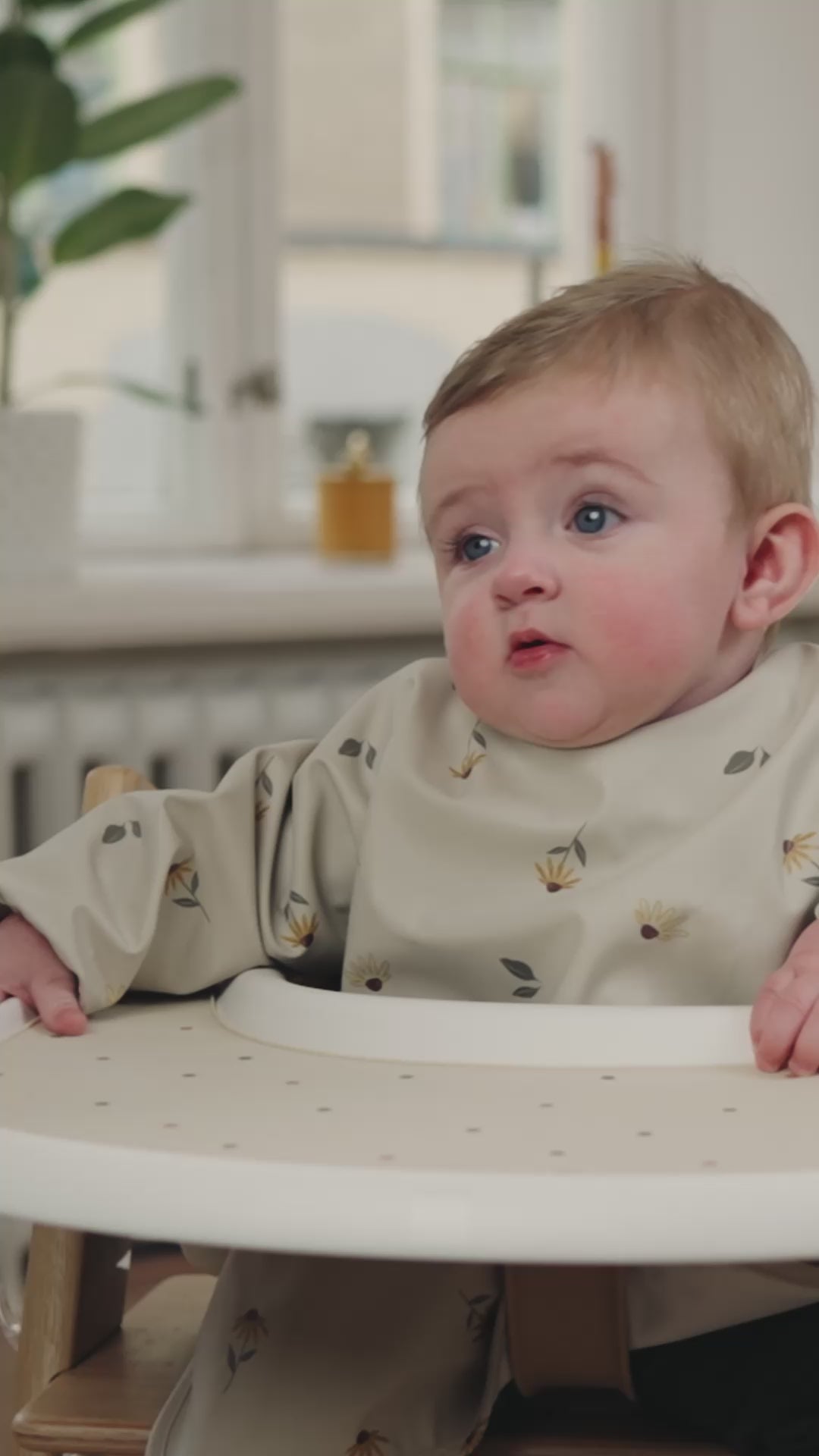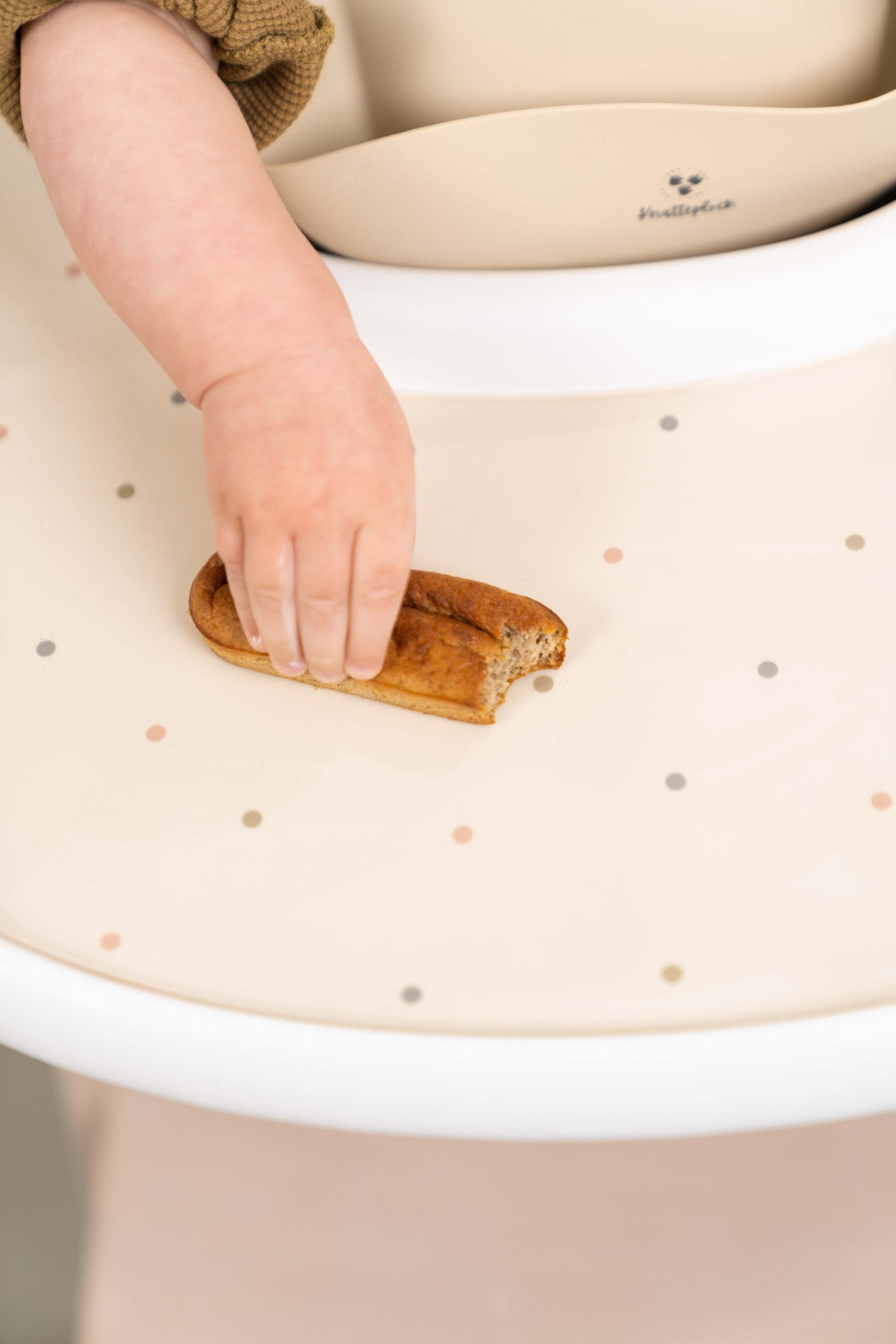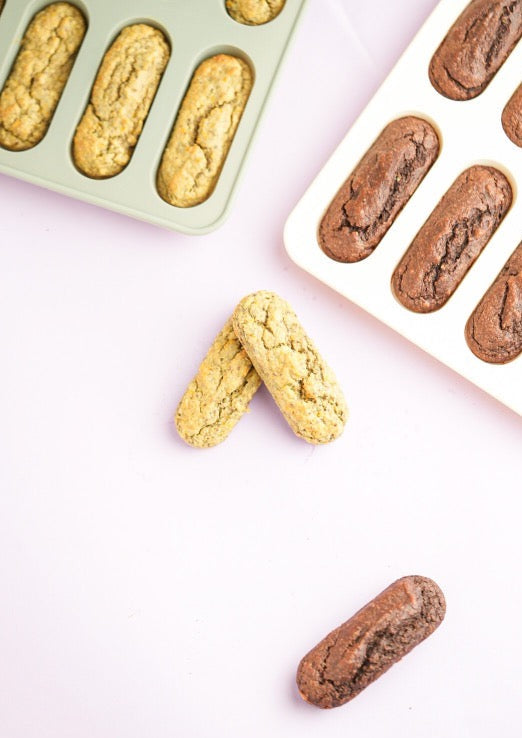Many of us probably saw the segment about food introduction on TV4 Nyhetsmorgon the other day. I like that the topic is given space on such a big channel. There is a lot to talk about on this topic - and many people have questions.

The specialist nurse in the clip highlights many good points – including letting children get messy and considering the child's maturity level when introducing food.
I myself would have liked to have seen more short videos of children eating on their own than was done in the clip, and that finger food/independent eating was also addressed as an enabler of food enjoyment and the desire to taste food.
Nausea and gagging
Several of the questions were about gagging and choking. That's probably one of the most common areas I get questions about as well. And I understand why, of course – it's scary when children gag and cough.
Here I think it is important to talk about the difference between choking (and causing airway obstruction) and choking. Because if you as a parent know the difference, it is much easier to stay calm, which is best for the child too. Of course it is important to learn basic CPR for children, but the foundation lies in understanding the body's mechanisms and learning when it is a dangerous situation and when it is not.
Choking can definitely be caused by the child getting a lot of food in their mouth, just like it is mentioned in the clip. But it is also a lot about the food reaching the trigger point for choking in the mouth. Which can happen even with small pieces of food. I think it is important to remember that large bites/pieces do NOT automatically mean a greater risk of choking.
Scribbling is a way of exploring
I like the perspective that it is completely normal for children to throw food and make messes during mealtimes. Children discover their world with all their senses and through play. So it is no wonder that they do the same when exploring food. The sensory aspect of messing is a great opportunity to learn how food feels, tastes and smells!
The joy of eating is so much more than just consuming food – it's community, culture and an experience. That's why I think it's great that they mention the importance of shared meals. It's the basis for a lot of the food introduction.
Some thoughts on the feature. It's great that it's getting a place on TV!
Watch the clip from TV4 Nyhetsmorgon here.
/Elin Oresten
Founder and licensed nutritionist

![]()
Do you get nervous when your child vomits?
Learn the difference between gagging and choking, and how to create safe meals for your baby.


